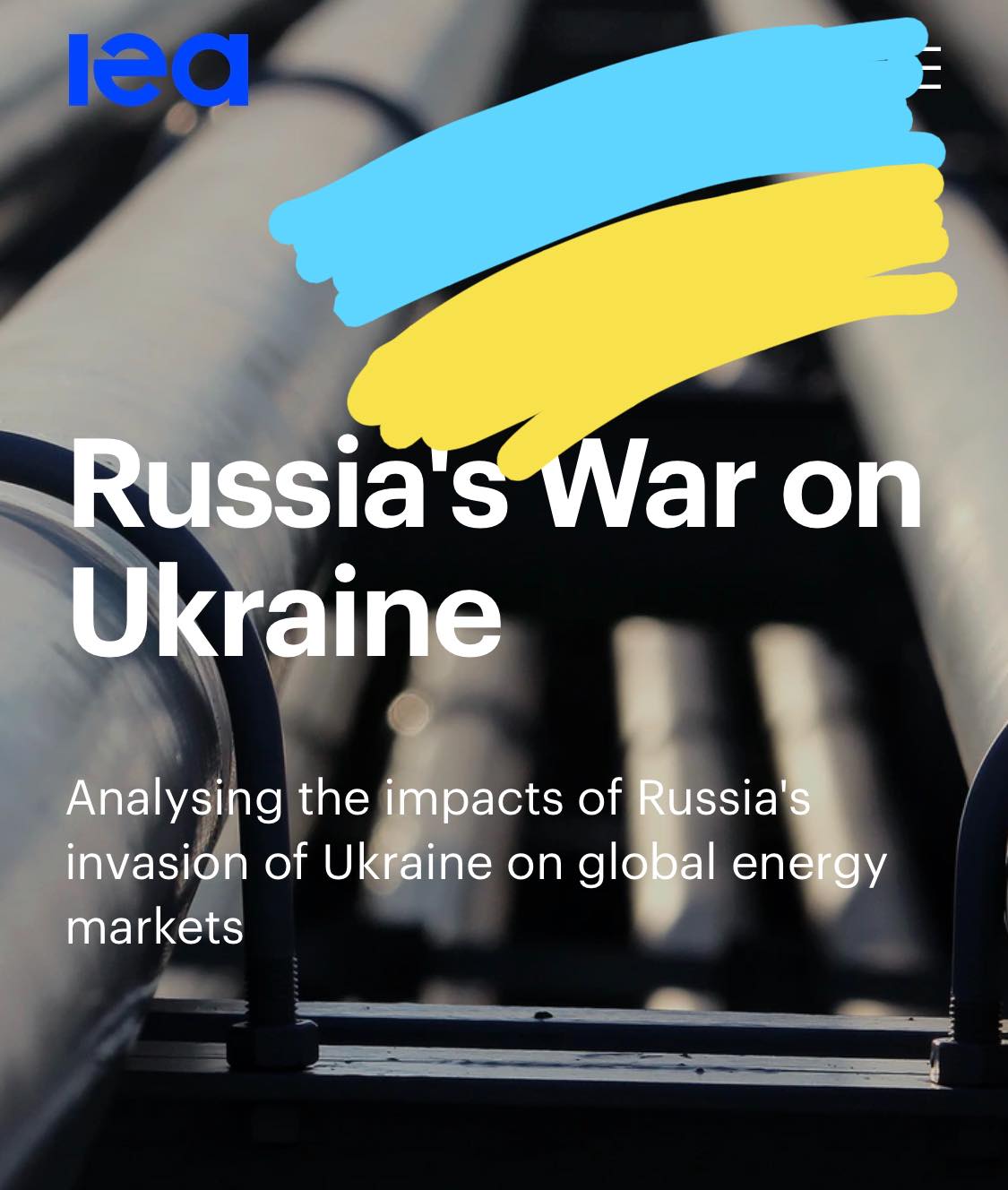Minus 1/3 of consumption or minus 50 billion m3 of russian gas in Europe by the end of the year — 10 steps

The EU plans to reduce russian gas imports as soon as possible. There is already an understanding of how to reduce by a third by the end of 2022 — an action plan has been developed that is consistent with the European Green Deal. We publish materials of the International Energy Agency (IEA).
Important
The proposed measures are fully in line with the European Green Deal and its Fit for 55 package, which paves the way for further emission reductions in the coming years.
A 10-Point Plan to Reduce the European Union’s Reliance on Russian Natural Gas
- No new gas supply contracts with russia.
- Replace russian supplies with gas from alternative sources.
- Introduce minimum gas storage obligations to enhance market resilience.
- Accelerate the deployment of new wind and solar projects.
- Maximize generation from existing dispatchable low-emissions sources: bioenergy and nuclear.
- Enact short-term measures to shelter vulnerable electricity consumers from high prices.
- Speed up the replacement of gas boilers with heat pumps.
- Accelerate energy efficiency improvements in buildings and industry.
- Encourage a temporary thermostat adjustment by consumers.
- Step up efforts to diversify and decarbonise sources of power system flexibility.
- Impact: Taking advantage of expiring long-term contracts with russia will reduce the contractual minimum take-or-pay levels for russian imports and enable greater diversity of supply.
- Impact: Around 30 bcm in additional gas supply from non-russian sources.
- Impact: Enhances the resilience of the gas system, although higher injection requirements to refill storage in 2022 will add to gas demand and prop up gas prices.
- Impact: An additional 35 TWh of generation from new renewable projects over the next year, over and above the already anticipated growth from these sources, bringing down gas use by 6 bcm.
- Impact: An additional 70 TWh of power generation from existing dispatchable low emissions sources, reducing gas use for electricity by 13 bcm.
- Impact: Brings down energy bills for consumers even when natural gas prices remain high, making available up to EUR 200 billion to cushion impacts on vulnerable groups.
- Impact: Reduces gas use for heating by an additional 2 bcm in one year.
- Impact: Reduces gas consumption for heat by close to an additional 2 bcm within a year, lowering energy bills, enhancing comfort and boosting industrial competitiveness.
- Impact: Turning down the thermostat for buildings’ heating by 1°C would reduce gas demand by some 10 bcm a year.
- Impact: A major near-term push on innovation can, over time, loosen the strong links between natural gas supply and Europe’s electricity security. Real-time electricity price signals can unlock more flexible demand, in turn reducing expensive and gas-intensive peak supply needs.
Statistics
In 2021, the European Union imported 155 billion m3 of natural gas from russia, which is about 45% of the EU’s gas imports and about 40% of its total gas consumption.
Undoubtedly, as a result of russia’s invasion of Ukraine, the EU’s energy security has been threatened. Therefore, measures aimed at reducing the European Union’s dependence on russian natural gas will be introduced in Europe in the coming months.
We need to get rid of russian fossil fuels and fossil fuels in general due to the fight against climate change and the short-term energy security of the European continent.


